
4 Ways to recover permanently deleted photos on iPhone
If your iPhone feels sluggish or often shows the "iPhone Storage Full" alert, the problem is likely large apps or videos; junk files gradually consume your space. Over time, these files accumulate inside apps, the photo library, downloads, and even the message system.
In this guide, you'll learn how to clean junk files on iPhone, restore performance, and recover valuable storage.
Junk files on iPhone are unnecessary data that pile up over time. These files come from apps, system processes, downloads, and routine usage. Though hidden, they occupy valuable space and often trigger the iPhone Storage Full alert.
The first step is to identify the main types of junk files on iPhone when you plan to clean junk files on iPhone or search for how to get more storage on iPhone without a hardware upgrade:
Individually minor, these items combine to erode free capacity. A routine purge helps reclaim space, avoids performance slowdowns, and prevents future iPhone storage full warnings, especially on models with limited capacity.
Fail to remove junk files, and you face more than minor slowdowns. If you aim to clean junk files on iPhone and avoid a full drive, understand the gains of routine cleanup:
Now, let's cover the key steps that clean junk files on an iPhone safely and effectively.
Not every tactic delivers the same payoff when you want to clean junk files on iPhone or figure out how to get more storage on iPhone. The methods below consistently free the most space, resolve slow performance, and stop the "iPhone Storage Full" alert, without risk to personal data or the need for advanced tools.
Many apps keep cache and background files to boost speed, yet this hidden data grows and fills iPhone storage. Cache often sits deep inside an app and stays untouched until you remove it.
How to clear app cache on iPhone:
1. Open Settings, tap General, then tap iPhone Storage.
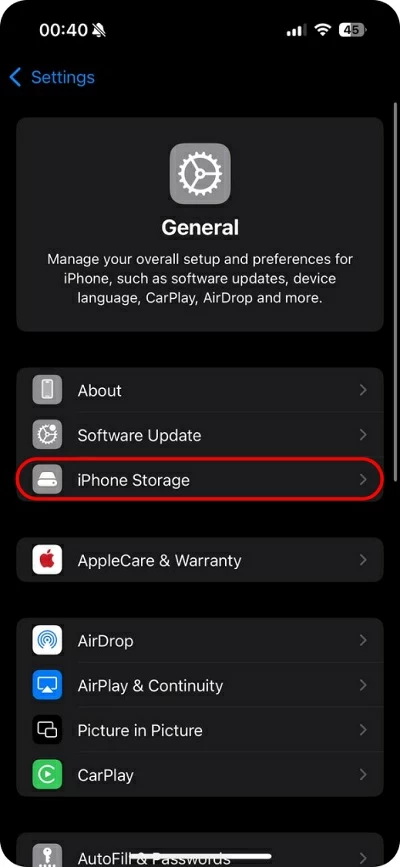
2. Wait until the app list appears, then tap an app that uses a large amount of space.
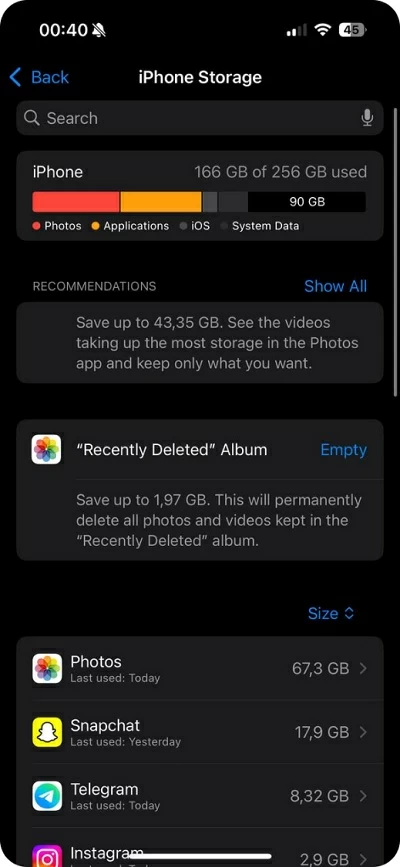
3. Tap Delete App to erase all data, cache, and temporary files.
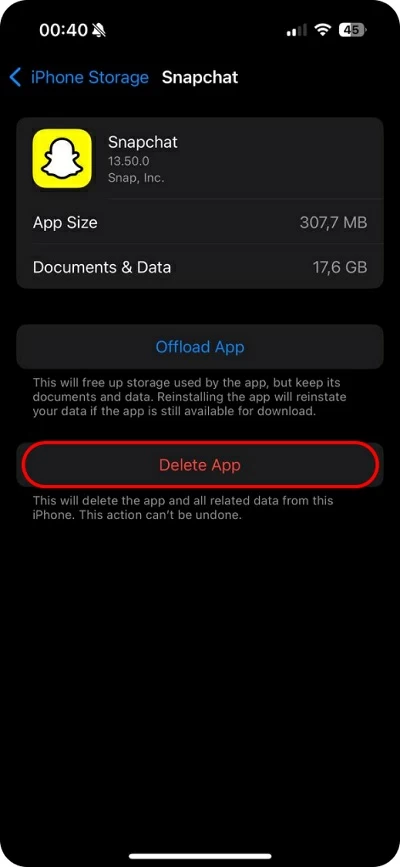
4. Open the App Store, reinstall the app, and sign in again.
Some apps provide internal options to clear the cache without deletion. For example:
Apps without a cache button require full deletion for a clean slate. Start with the heaviest apps to recover the most space.
Cleaners offer the fastest and most convenient method to remove unnecessary photos and videos. One program that stands out in this category is the Clever Cleaner app for iPhone. The app runs entirely on your device, keeps all data private, and requires no account, subscription, or login. Best of all, it remains 100% free and contains no ads, which makes it easy to recommend as a tool for quick and safe photo cleanup.
How to use Clever Cleaner:
1. Open the App Store and install Clever Cleaner: AI Cleanup App.
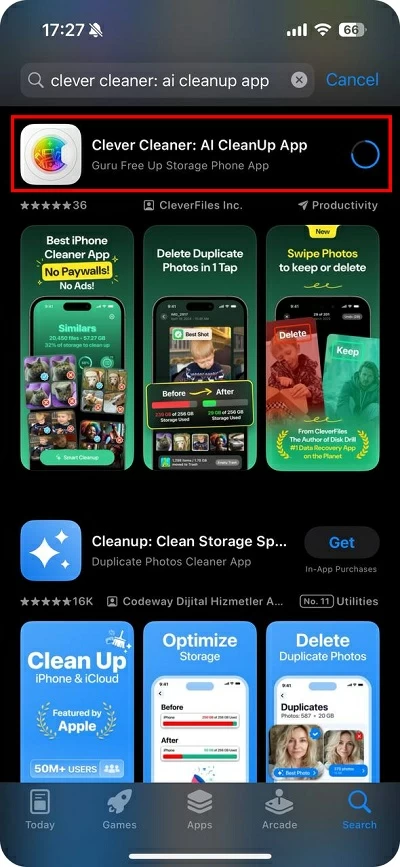
2. Launch the app and grant access to your photo library.
3. Tap Smart Cleanup to start the scan.

4. Check each duplicate group and confirm which photos to delete.
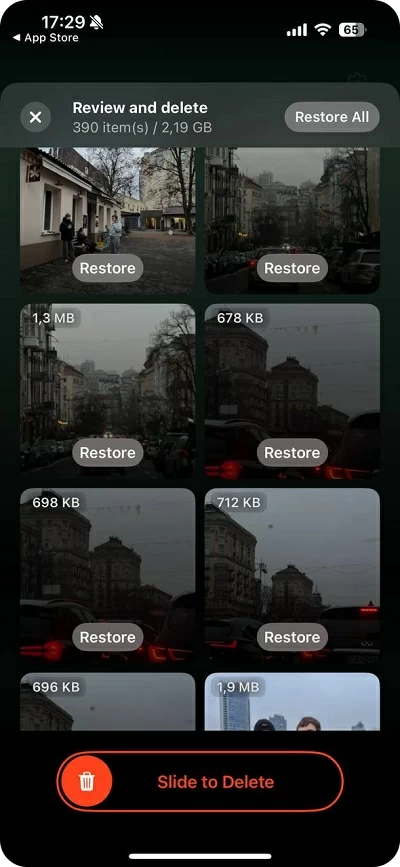
5. Open Photos, choose Recently Deleted, and erase the folder to free space.
Clever Cleaner removes junk photos fast and safely, and its toolset extends far beyond duplicate detection. One tap finds duplicate and similar shots, the app auto-selects the best version, deletes screenshots on the spot, flags heavy video files, and compresses Live Photos to save space with no loss of quality. A quick swipe erases clutter within seconds.
Downloaded files and offline content often sit in app folders long after they lose relevance. These items quietly use storage and seldom appear during routine checks.
How to remove downloaded files:
1. Open the Files app, tap Browse, then select On My iPhone to view local app folders.
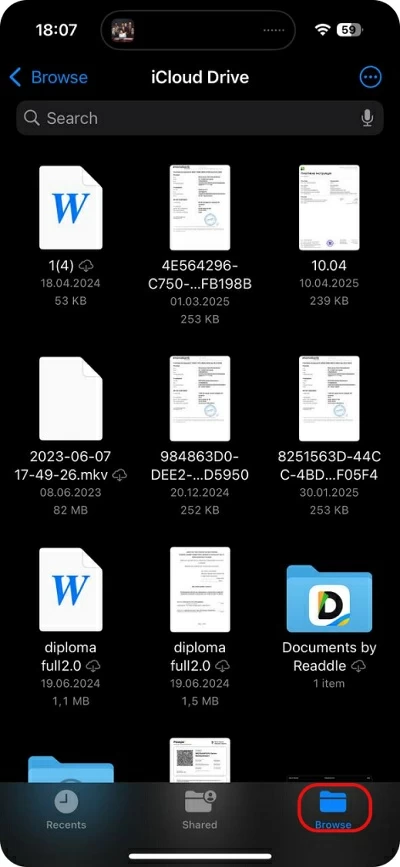
2. Open folders such as Downloads, Pages, or GarageBand and delete documents, PDFs, ZIP archives, or videos no longer needed.
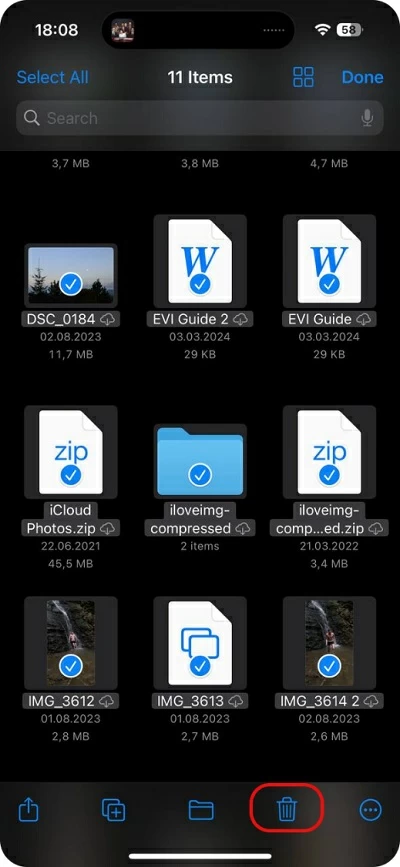
This method targets junk files invisible to iOS cleanup tools. A brief review often reclaims multiple gigabytes without touching personal data or system settings.
If no space remains after all cleanup steps, you can get more storage through an iCloud upgrade or an external solution.
Cloud-based apps such as Google Drive, OneDrive, YouTube, and Spotify save previews, thumbnails, and offline files. These items stay hidden inside each app and can occupy several gigabytes if left untouched.
How to clear cloud app data on iPhone:
1. Open a cloud or streaming app (for example, YouTube, Spotify).

2. Navigate to the app's Settings menu.
3. Select options: video and audio preferences, and tap the Offline button
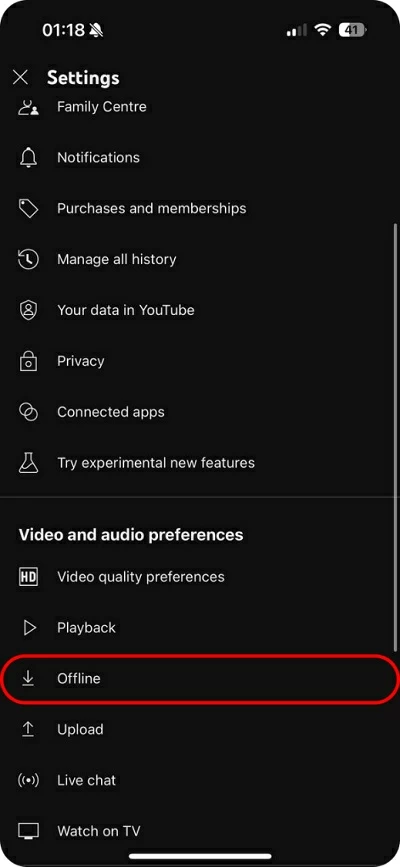
4. Delete offline videos, saved playlists, shared documents, and any other files no longer needed.
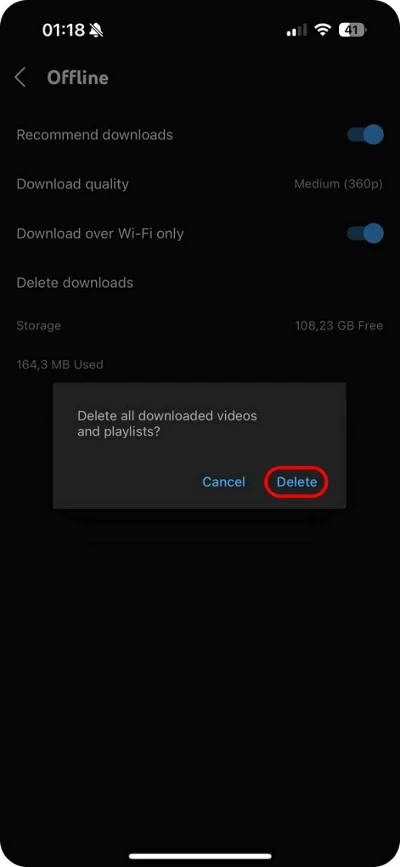
Cloud apps often keep podcasts, videos, and shared files long after their original use. Removing this hidden data frees space immediately and prevents silent storage loss across multiple services. A monthly review of cloud app caches avoids future buildup.
Most users overlook this type of storage, yet it grows fast, especially in media-heavy apps. Cached video thumbnails, offline music, preview files, and temporary backups often remain after playback or sync finishes. Cloud apps rarely delete them on their own. Manual cleanup helps reclaim hidden space and improves app responsiveness. Always review downloaded folders and stored content in each app's settings for maximum storage recovery.
Many online guides claim that an app offload frees junk files on an iPhone. The claim misses the point. Offload pulls out the executable portion of an app but leaves cache, logs, and temporary folders untouched. Those hidden files often use more space than the app itself.
Offload apps needed at special times, travel tools, or seasonal games. The icon stays visible, and iOS restores the app with one tap, but most cache and internal data still sit in storage.
A full delete works far better when the goal is true cleanup. Delete strips away the app plus every related file, including cache, logs, and temporary data. A quick reinstall then places a fresh copy of the app, free of leftover clutter.
If storage space feels tight, choose delete over offload. Offload helps only in situations where you must keep user settings for later use. For real junk-file removal, deletion followed by a clean reinstall provides the most effective result.
How do junk files appear on an iPhone?
Junk files collect during normal app use, photo duplication, system cache activity, message attachments, and one-time downloads. Built-in apps such as Safari and Messages leave behind temporary data that fills storage over time.
Is manual junk-file removal safe?
Yes. Manual deletion of cache, duplicate photos, large attachments, and unused apps does not touch critical system data. iOS separates files from user data, so space can be cleared without risk to the operating system or private content.
Does a factory reset clear all junk files on an iPhone?
Yes. A full reset erases apps, personal data, and hidden cache, so no junk remains. This step also removes photos and settings, so create an iCloud or computer backup in advance and restore only items afterward.
What separates offload from delete for an app?
Offload removes the app itself but preserves user settings and saved documents. Deleting removes the app together with every related file, freeing the maximum amount of space.
Why does "Storage Almost Full" persist after photo deletion?
System data, app cache, and hidden downloads often remain untouched by photo removal. The System Data category can occupy several gigabytes until browser data, app cache, old files, and message media are cleared.
Before we end, here are a few extra tips that help keep your iPhone free of clutter and prevent storage alerts down the road.
A durable solution to how to free up space on iPhone calls for routine discipline rather than a single purge.